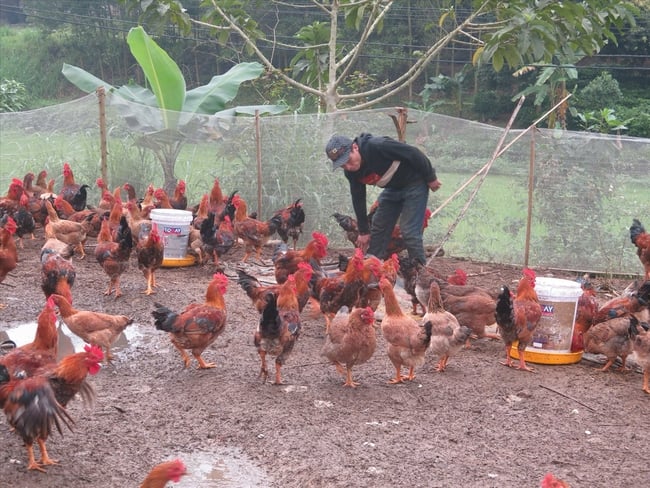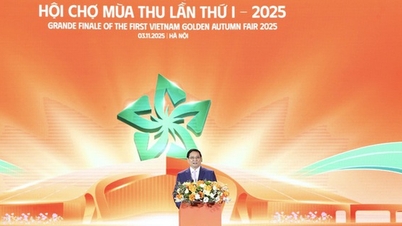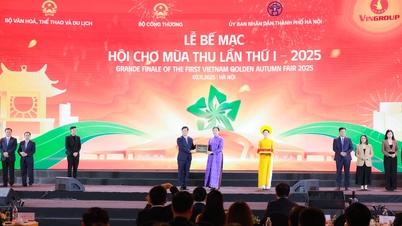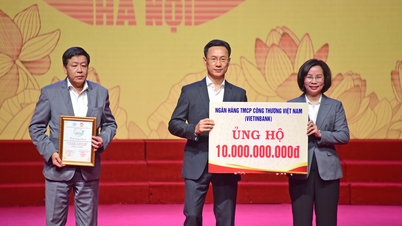This is not only a technical task, but also has profound social significance – helping people in remote areas, especially ethnic minority areas, to access information more quickly, accurately and effectively.

Support production development, livelihood diversification and replication of poverty reduction models under the National Target Program on Sustainable Poverty Reduction
Pursuant to Decision No. 90/QD-TTg dated January 18, 2022 of the Prime Minister on approving the National Target Program on Sustainable Poverty Reduction, along with guiding documents of the Ministry of Information and Communications , the Department of Culture, Sports and Tourism of Can Tho City (formerly the Department of Information and Communications) has taken the lead in implementing Sub-project 1: Reducing information poverty. The focus is on strengthening the facilities and operational capacity of the grassroots broadcasting system, in order to serve the propaganda and dissemination of essential information to the people.
In the period of 2022 - 2024, the total budget for this field in the old Hau Giang area is more than 1.06 billion VND, with a disbursement rate of over 97%. From this source of funding, two radio stations in Luong Nghia and Xa Phien communes (old Long My district) have been converted from traditional FM technology to a broadcasting system applying information technology - telecommunications. Along with that, 11 new technology loudspeaker clusters have been installed, helping to improve broadcasting quality, expand coverage, and ensure that people in hamlets and remote areas can still access information promptly.
Not only stopping at technical infrastructure, the program also focuses on maintaining information activities at the grassroots level. In 2024, the city has implemented financial support for two public postal service points in communes in Region III, with a support level of 1.2 million VND/month according to Decision No. 1014/QD-UBND dated July 16, 2024. This is a practical support step to help maintain community information points, serving the needs of accessing information and public services of people in disadvantaged areas.
In the old Soc Trang area, the results also recorded many impressive figures. A total budget of more than 7.1 billion VND was allocated for upgrading and expanding grassroots radio broadcasting. From this resource, 20 new commune-level radio stations were established, 43 damaged loudspeaker clusters were replaced and 10 other loudspeaker clusters were expanded to apply information and telecommunications technology. The total cost for this item was up to nearly 4 billion VND. The synchronous investment has created conditions for information on policies, science and technology, and economic development models to spread widely to the people, contributing to improving people's knowledge and promoting local socio-economic development.
According to the Department of Culture, Sports and Tourism of Can Tho City, the current grassroots broadcasting system is not just a "loudspeaker" as before, but has become a "bridge" of information between the government and the people, especially in the context of digital transformation. The application of information and telecommunications technology helps to transmit information quickly, save costs, and at the same time opens up the possibility of integrating many new forms of communication such as broadcasting over the Internet, remote control, and multi-platform data sharing.
However, the implementation also encountered many difficulties. Although some communes, wards and towns have met the new rural standards, their broadcasting systems have degraded and their equipment has been severely damaged, while current regulations only support investment for communes in particularly difficult areas. The investment rate according to current regulations is still low (maximum support of 300 million VND/commune for new radio stations, 70% for upgrades), not meeting the actual needs of the locality.
In this situation, Can Tho city proposed that the Central Government and relevant ministries and branches consider expanding the beneficiary areas, raising the investment level and creating a more flexible mechanism in implementing grassroots broadcasting projects. This is an important condition for the locality to continue to improve the information system in disadvantaged areas, ensuring that all people have access to official information, serving production, life and sustainable development.
It can be affirmed that investing in grassroots radio is investing in grassroots information work - the foundation of sustainable poverty reduction. Each loudspeaker cluster and each upgraded radio station is not only a technical infrastructure, but also an "extended arm" of the government, bringing the voice, policies and guidelines of the Party and State closer to the people.
Source: https://bvhttdl.gov.vn/nang-cap-he-thong-truyen-thanh-co-so-cau-noi-thong-tin-den-nguoi-dan-20251103121244987.htm




![[Photo] Fall Fair 2025 and impressive records](https://vphoto.vietnam.vn/thumb/1200x675/vietnam/resource/IMAGE/2025/11/03/1762180761230_ndo_br_tk-hcmt-15-jpg.webp)

![[Photo] Prime Minister Pham Minh Chinh receives the Chairman of the Japan-Vietnam Friendship Association in the Kansai region](https://vphoto.vietnam.vn/thumb/1200x675/vietnam/resource/IMAGE/2025/11/03/1762176259003_ndo_br_dsc-9224-jpg.webp)



























































































Comment (0)